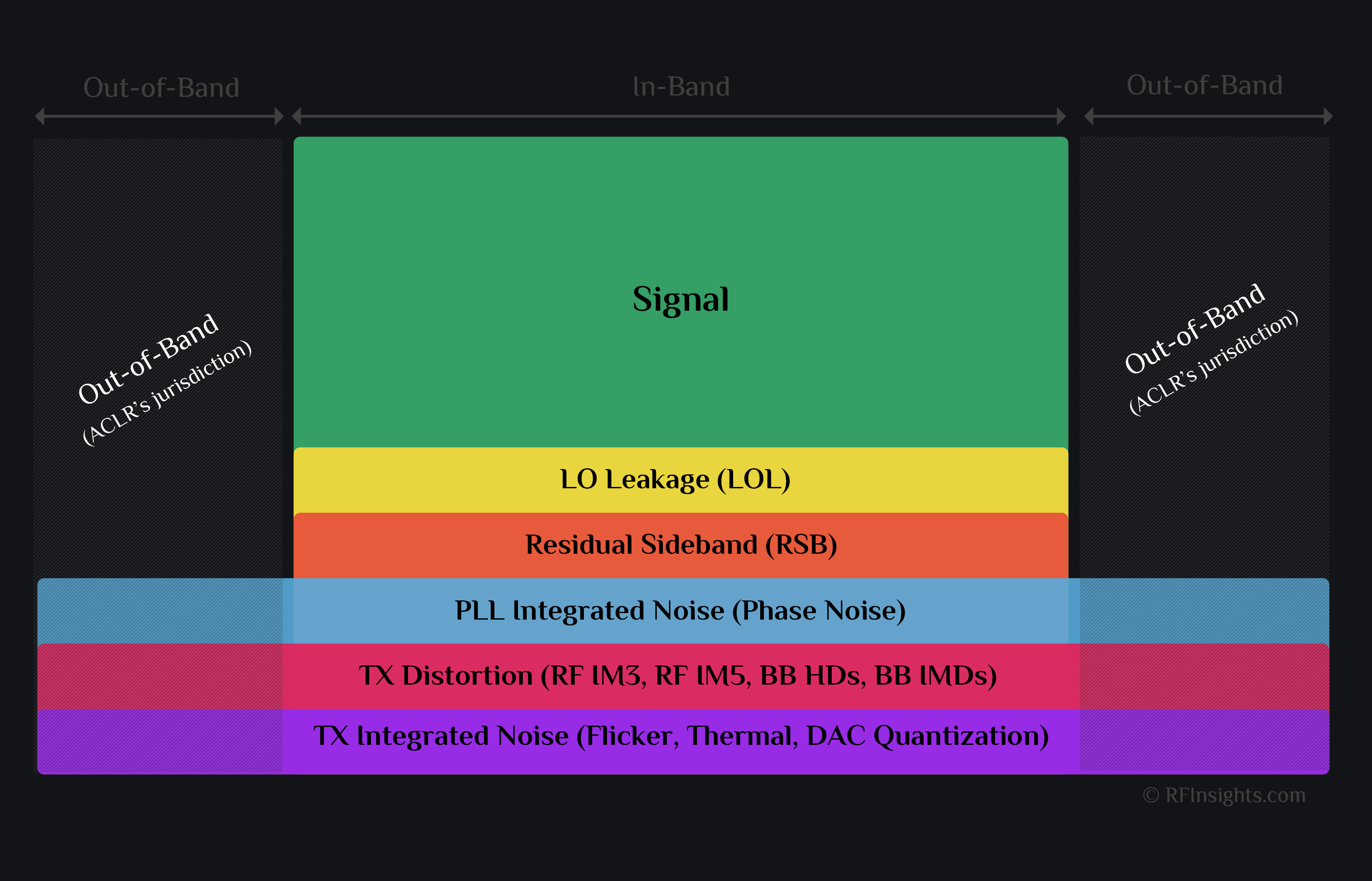TX EVM
EVM is one of the key TX design spec. EVM is a measure of signal quality. It is a measure of in-band distortion and noise while ACLR was a measure of out-of-band distortion and noise. Funny enough that since it is in-band, you do not care as much about it as ACLR. If distortion is leaking in neighboring band, you have to fix it right away. If distortion is falling in-band, you are like:
“ahh okay, will see how much do I need to fix it, maybe I can still play some trade-offs in my system to do something about (and by the way I didn’t impose very demanding distortion specs on myself, things fall in-band, I take care, these ACLR folks are outrageous, they just don’t want you to emit anything outside), enough blabber, I will fix it, don’t worry, let me see what’s wrong with ACLR first”
Okay, but how would you fix EVM? We need need to decompose EVM into different metrics to understand what factors contribute to it, and thereby optimize/debug it with proper insights.
Breakdown of EVM
TX EVM is composed of three main components: distortion, noise and leakages as shown below.

Thoughts
- LO leakage (LOL) is a big contributor to EVM. LOL itself is composed of two components: DC offset and LO feedthrough. Good thing is we can calibrate out both of them and get rid of LOL.
- Residual sideband (RSB) comes about when I and Q are mismatched in an IQ TX. If not calibrated, this is also a big contributor.
- PLL phase noise is a critical contributor to EVM (and often dominates because it is what it is, it cannot be calibrated out). You can only optimize your PLL/VCO designs to lower it as much as possible. You need 2D integration to come up with total integrated phase noise power.
- TX Distortion needs to be minimized (and chances are you have already done so in effort to minimize ACLR). Distortion can be put in two categories:
- Baseband Distortion: HDs, IMDs etc. a lot of distortion products in baseband fold back in signal region.
- RF Distortion (means upconverted baseband signal getting distorted by mixer, PA etc.): This mostly consists of IM3 and IM5.
- DAC jitter noise is usually a top contributor in DAC related EVM degradation. However, even if everything was perfect, your EVM would be limited by DAC quantization noise. It has limited bits. It has limited resolution. It is going to add some quantization noise which will set the floor to EVM.
- TX Noise, especially flicker noise, can be a big contributor as well. You need 1D integration to come up with total integrated TX noise power. You would need to check noise summary in your simulations to understand what is contributing more to total integrated noise power, is it flicker, is it thermal or some other noise, and then optimize accordingly.
Browse by Tags
RFInsights
Published: 14 Jan 2023
Last Edit: 14 Jan 2023